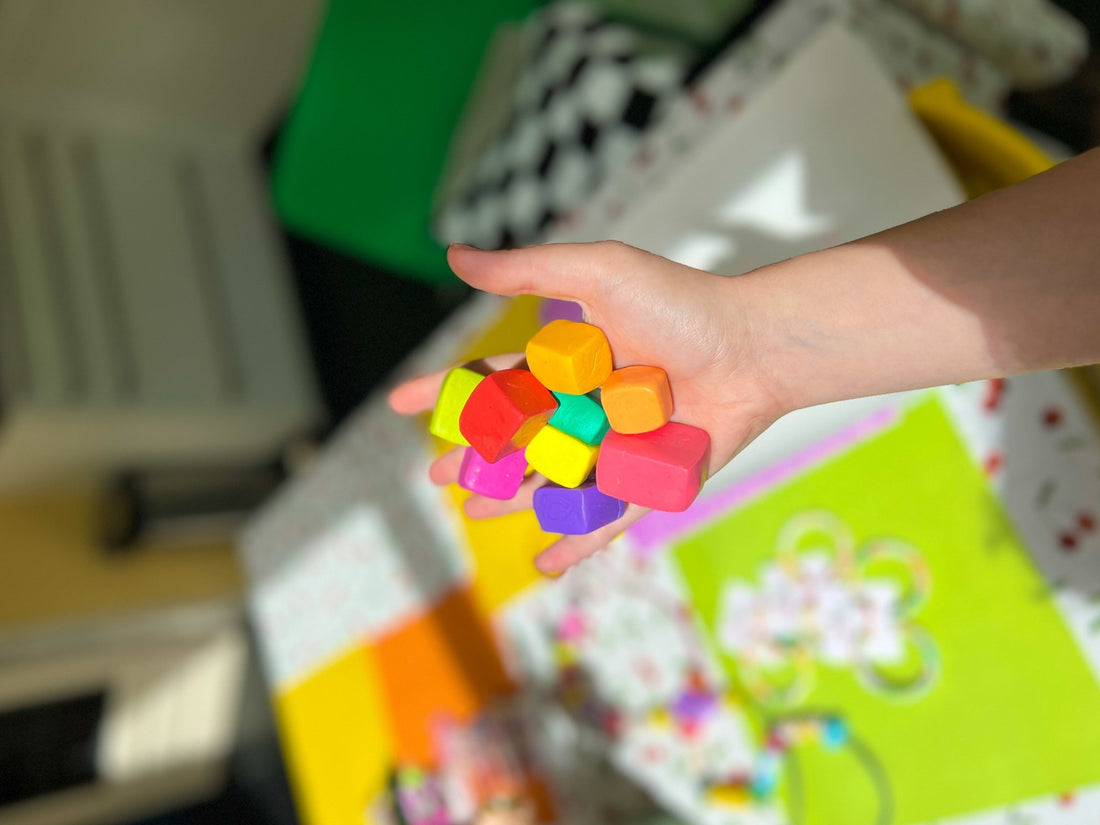
Key factors to bear in mind when crafting jewelry using polymer clay
Share
Creating jewelry from polymer clay is an art that combines creativity with precision. However, there are several things I suggest to keep in mind of that can affect the quality of the final product. These are the things I think is important when working with polymer clay, which will ensure your jewelry pieces turn out a work of art!
Safety first
Polymer clay is generally safe but it's important to work in a well-ventilated area and avoid inhaling the fumes released during baking. Always wash your hands after handling the clay and clean your work surfaces once you finish.
Proper conditioning
Polymer clay needs to be conditioned thoroughly before use. Skipping this step can result in brittle and lower-quality jewelry. You may use a pasta machine and hands to mix and condition the clay well, until it has a workable softness.
Cleaning work surface
Polymer clay attracts dust and dirt very easily. Before initiating projects, I make sure to wipe off all surfaces. This will help eliminate dust from sticking to clay, which can ruin the appearance and quality of jewelry.
Using right tools
Using the inadequate tools or lacking the necessary tools will diminish the quality of your creation experience. Once you're sure that polymer clay is a long-term interest, investing in good-quality tools specifically designed for polymer clay, such as clay rollers, a pasta machine, a Dremel for sanding and drilling, shaping cutters, and sculpting tools is really a good idea.
Overworking the clay
While conditioning is crucial, overworking the clay will make it too soft to work with and will affect the final outcome. Over-conditioned clay is harder to shape and won't look flawless. If you over-condition it by mistake and it's too soft to shape, leave it as it is and start working with another batch of clay.
Correct baking temperature
Baking polymer clay at the wrong temperature can cause it to burn or remain uncured. Use an oven thermometer to ensure accuracy, as household ovens can often be off by several degrees. It's also not healthy to bake clay products in the same oven used for food.
Mixing different clay brands
Different brands of polymer clay have varying compositions and baking requirements. Mixing them can result in inconsistent curing and texture.
Trust the process
Creating polymer clay jewelry requires patience. Rushing through steps like baking or cooling can result in a dissatisfying finish. Working with clay itself requires dedication, as there are many steps to follow from start to finish. If you get extremely bored along the way, clay might not be the right material for you. Before jumping into conclusions about this, please read this article:
Hold onto your creativity and authenticity
While it's easy to find inspiration in other makers' work, I find it important to add a unique touch to my creations. Instead of directly copying other maker's designs, finding elements you like and incorporate them into your own style will be the key for a unique brand identity. I always look for inspiration in nature, fashion, and art, list out my ideas. Over time, this practice will enhance your creativity and help you develop a distinct artistic style, reflecting to your work.
Patience brings success!!
Double-checking the points above and practising regularly will definitely increase the quality of your creation journey. Keep in mind that from conditioning clay to creating color recipes, shaping, baking, sanding, and drilling—you need to be a fighter, not a quitter in order to achieve a quality product! With these tips in mind, your polymer clay jewelry-making experience will be both enjoyable and successful.


